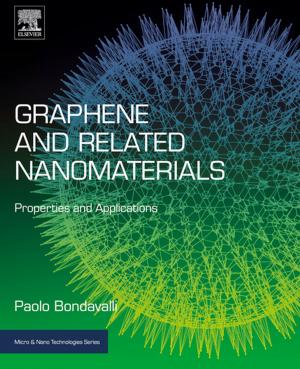Bio-nanoimaging
Protein Misfolding and Aggregation
Nonfiction, Science & Nature, Science, Biological Sciences, Biochemistry, Technology, Engineering, Health & Well Being, Medical| Author: | ISBN: | 9780123978219 | |
| Publisher: | Elsevier Science | Publication: | November 5, 2013 |
| Imprint: | Academic Press | Language: | English |
| Author: | |
| ISBN: | 9780123978219 |
| Publisher: | Elsevier Science |
| Publication: | November 5, 2013 |
| Imprint: | Academic Press |
| Language: | English |
Bio-Nanoimaging: Protein Misfolding & Aggregation provides a unique introduction to both novel and established nanoimaging techniques for visualization and characterization of misfolded and aggregated protein species. The book is divided into three sections covering: - Nanotechnology and nanoimaging technology, including cryoelectron microscopy of beta(2)-microglobulin, studying amyloidogensis by FRET; and scanning tunneling microscopy of protein deposits - Polymorphisms of protein misfolded and aggregated species, including fibrillar polymorphism, amyloid-like protofibrils, and insulin oligomers - Polymorphisms of misfolding and aggregation processes, including multiple pathways of lysozyme aggregation, misfolded intermediate of a PDZ domain, and micelle formation by human islet amyloid polypeptide
Protein misfolding and aggregation is a fast-growing frontier in molecular medicine and protein chemistry. Related disorders include cataracts, arthritis, cystic fibrosis, late-onset diabetes mellitus, and numerous neurodegenerative diseases like Alzheimer's and Parkinson's. Nanoimaging technology has proved crucial in understanding protein-misfolding pathologies and in potential drug design aimed at the inhibition or reversal of protein aggregation. Using these technologies, researchers can monitor the aggregation process, visualize protein aggregates and analyze their properties.
- Provides practical examples of nanoimaging research from leading molecular biology, cell biology, protein chemistry, biotechnology, genetics, and pharmaceutical labs
- Includes over 200 color images to illustrate the power of various nanoimaging technologies
- Focuses on nanoimaging techniques applied to protein misfolding and aggregation in molecular medicine
Bio-Nanoimaging: Protein Misfolding & Aggregation provides a unique introduction to both novel and established nanoimaging techniques for visualization and characterization of misfolded and aggregated protein species. The book is divided into three sections covering: - Nanotechnology and nanoimaging technology, including cryoelectron microscopy of beta(2)-microglobulin, studying amyloidogensis by FRET; and scanning tunneling microscopy of protein deposits - Polymorphisms of protein misfolded and aggregated species, including fibrillar polymorphism, amyloid-like protofibrils, and insulin oligomers - Polymorphisms of misfolding and aggregation processes, including multiple pathways of lysozyme aggregation, misfolded intermediate of a PDZ domain, and micelle formation by human islet amyloid polypeptide
Protein misfolding and aggregation is a fast-growing frontier in molecular medicine and protein chemistry. Related disorders include cataracts, arthritis, cystic fibrosis, late-onset diabetes mellitus, and numerous neurodegenerative diseases like Alzheimer's and Parkinson's. Nanoimaging technology has proved crucial in understanding protein-misfolding pathologies and in potential drug design aimed at the inhibition or reversal of protein aggregation. Using these technologies, researchers can monitor the aggregation process, visualize protein aggregates and analyze their properties.
- Provides practical examples of nanoimaging research from leading molecular biology, cell biology, protein chemistry, biotechnology, genetics, and pharmaceutical labs
- Includes over 200 color images to illustrate the power of various nanoimaging technologies
- Focuses on nanoimaging techniques applied to protein misfolding and aggregation in molecular medicine















